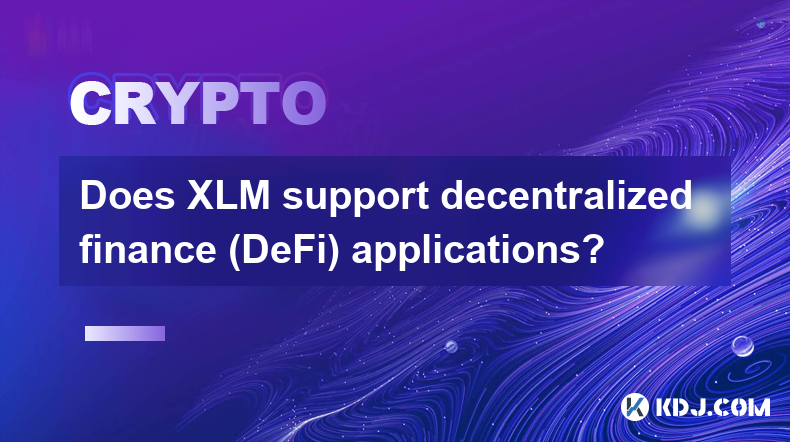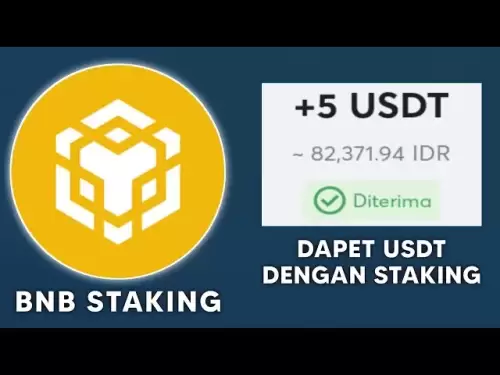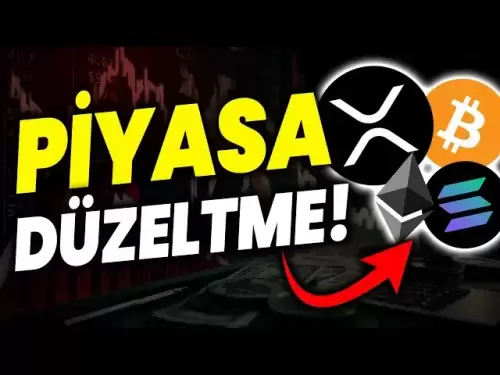-
 Bitcoin
Bitcoin $103,838.1703
5.33% -
 Ethereum
Ethereum $2,364.7328
10.94% -
 Tether USDt
Tether USDt $1.0007
0.03% -
 XRP
XRP $2.0950
9.02% -
 BNB
BNB $634.7170
5.25% -
 Solana
Solana $142.0264
11.70% -
 USDC
USDC $1.0000
0.00% -
 TRON
TRON $0.2728
5.18% -
 Dogecoin
Dogecoin $0.1598
10.80% -
 Cardano
Cardano $0.5655
9.94% -
 Hyperliquid
Hyperliquid $37.8554
11.16% -
 Sui
Sui $2.7196
17.77% -
 Bitcoin Cash
Bitcoin Cash $458.7795
4.67% -
 Chainlink
Chainlink $12.4271
12.53% -
 UNUS SED LEO
UNUS SED LEO $9.0769
0.74% -
 Avalanche
Avalanche $17.7117
12.43% -
 Stellar
Stellar $0.2392
9.83% -
 Toncoin
Toncoin $2.8765
9.58% -
 Shiba Inu
Shiba Inu $0.0...01131
11.69% -
 Litecoin
Litecoin $84.0378
9.79% -
 Hedera
Hedera $0.1456
14.65% -
 Monero
Monero $305.0298
5.16% -
 Ethena USDe
Ethena USDe $1.0006
0.03% -
 Dai
Dai $1.0001
0.02% -
 Polkadot
Polkadot $3.3522
10.31% -
 Bitget Token
Bitget Token $4.0785
3.25% -
 Uniswap
Uniswap $6.7682
13.08% -
 Pepe
Pepe $0.0...09557
13.29% -
 Pi
Pi $0.5253
9.79% -
 Aave
Aave $250.5247
16.65%
Does XLM support decentralized finance (DeFi) applications?
Stellar Lumens (XLM) offers a faster, cheaper DeFi environment than Ethereum, ideal for specific applications prioritizing speed and low fees. However, its ecosystem is less mature, with fewer developers and tools than leading competitors.
Mar 22, 2025 at 01:08 pm

Key Points:
- Stellar Lumens (XLM) does offer some DeFi capabilities, but its ecosystem is less mature compared to Ethereum or other leading DeFi platforms.
- XLM's focus on speed and low transaction fees makes it suitable for certain DeFi applications, particularly those requiring fast and inexpensive transactions.
- The Stellar network's architecture and features present both advantages and limitations for DeFi development.
- Several projects are exploring and building DeFi applications on the Stellar network, but widespread adoption remains to be seen.
- Understanding the differences between Stellar's approach to DeFi and that of other blockchains is crucial for developers and users.
Does XLM Support Decentralized Finance (DeFi) Applications?
Stellar Lumens (XLM), while not as prominent a player in the DeFi space as Ethereum, does support the development and deployment of decentralized finance applications. However, its approach and capabilities differ significantly from other leading platforms. The network's architecture prioritizes speed and low transaction costs, making it attractive for specific types of DeFi applications that benefit from these characteristics.
The core functionality of XLM, its speed, and low cost, makes it suitable for applications needing rapid and inexpensive transactions. This contrasts with Ethereum, which, while offering a much broader DeFi ecosystem, often suffers from higher transaction fees and slower processing times. This inherent difference dictates the types of DeFi applications that thrive on each network.
One key aspect differentiating XLM's DeFi capabilities lies in its design philosophy. Unlike Ethereum's focus on smart contracts as the primary building block for DeFi, Stellar emphasizes federated consensus and trust-minimized protocols. This means applications are built with a different set of tools and considerations.
While Stellar's smart contract functionality is less sophisticated than Ethereum's, it is still sufficient for certain DeFi applications. Several projects are actively developing and deploying DeFi applications on the Stellar network, demonstrating its potential. These projects often leverage Stellar's strengths, focusing on applications where speed and low costs are paramount.
However, the relative immaturity of the Stellar DeFi ecosystem compared to Ethereum's is a notable limitation. The smaller number of developers and available tools can hinder innovation and growth. This lack of widespread adoption also poses challenges for developers considering building on Stellar.
The Stellar Development Foundation actively supports the growth of its DeFi ecosystem. They provide resources and grants to developers to encourage innovation and build a more robust and vibrant DeFi environment. Their efforts are aimed at attracting more developers and users to the platform.
Furthermore, the regulatory landscape surrounding cryptocurrencies, including DeFi protocols, presents challenges to XLM’s DeFi ambitions. The unclear regulatory environment can influence the development and adoption of DeFi projects on any blockchain, including Stellar.
Building on Stellar also requires a different approach to development compared to building on Ethereum. Developers need to familiarize themselves with Stellar's specific tools and protocols. This necessitates a learning curve and can potentially limit the number of developers actively contributing to the Stellar DeFi ecosystem.
The Stellar network's inherent strengths, such as its speed and low transaction costs, position it well for certain DeFi use cases. However, its relative lack of smart contract sophistication and the smaller size of its DeFi ecosystem represent significant challenges. These factors need to be carefully considered when evaluating the suitability of Stellar for a particular DeFi project.
One can find various resources online detailing the specifics of developing on Stellar. The Stellar Development Foundation's website offers comprehensive documentation and tutorials for developers. Community forums and online resources can provide additional support and guidance.
XLM's decentralized exchange (DEX) capabilities are a key component of its DeFi offering. While not as extensive as those found on other platforms, these DEXs enable users to swap XLM and other assets directly on the Stellar network, contributing to its overall DeFi ecosystem.
The interoperability features of Stellar are also relevant to DeFi. The ability to seamlessly integrate with other blockchains could potentially allow for the development of cross-chain DeFi applications, expanding the scope and functionality of the ecosystem.
However, the future of XLM in DeFi remains uncertain. Its success will depend on factors such as the continued growth of the Stellar network, the development of more sophisticated DeFi tools and applications, and increased developer and user adoption.
Frequently Asked Questions:
Q: What are the main advantages of using XLM for DeFi applications?
A: XLM's main advantages include its speed, low transaction fees, and focus on trust-minimized protocols. These are beneficial for applications requiring fast and inexpensive transactions.
Q: What are the limitations of XLM for DeFi applications?
A: Limitations include a less mature DeFi ecosystem compared to Ethereum, less sophisticated smart contract capabilities, and a smaller developer community.
Q: How does Stellar's approach to DeFi differ from Ethereum's?
A: Stellar emphasizes federated consensus and trust-minimized protocols, while Ethereum relies heavily on smart contracts. This leads to different architectural approaches and development methodologies.
Q: Are there any significant DeFi projects built on the Stellar network?
A: While the number is smaller compared to Ethereum, several projects are exploring and building DeFi applications on Stellar, though widespread adoption is yet to be seen.
Q: What resources are available for developers interested in building DeFi applications on Stellar?
A: The Stellar Development Foundation provides documentation, tutorials, and other resources to assist developers. Community forums and online resources also offer support and guidance.
Disclaimer:info@kdj.com
The information provided is not trading advice. kdj.com does not assume any responsibility for any investments made based on the information provided in this article. Cryptocurrencies are highly volatile and it is highly recommended that you invest with caution after thorough research!
If you believe that the content used on this website infringes your copyright, please contact us immediately (info@kdj.com) and we will delete it promptly.
- Bitcoin Scaling Showdown: Lightning Network, Sztorc, and the Future of Payments
- 2025-06-24 04:25:12
- Cathie Wood, ARK Invest, and Circle Shares: A Wild Ride on the Stablecoin Wave
- 2025-06-24 04:25:12
- Download 2025: Live Review Through Martha's Lens
- 2025-06-24 04:32:10
- Turtle Club Joins Kaito Leaderboard: A New Era for Ecosystem Push
- 2025-06-24 04:35:12
- Crypto Penny Coins: Hunting for Monster Gains in 2025
- 2025-06-24 02:45:12
- Ethereum Whale Dips Into Crashing ETH: Smart Move?
- 2025-06-24 02:25:12
Related knowledge

How to customize USDT TRC20 mining fees? Flexible adjustment tutorial
Jun 13,2025 at 01:42am
Understanding USDT TRC20 Mining FeesMining fees on the TRON (TRC20) network are essential for processing transactions. Unlike Bitcoin or Ethereum, where miners directly validate transactions, TRON uses a delegated proof-of-stake (DPoS) mechanism. However, users still need to pay bandwidth and energy fees, which are collectively referred to as 'mining fe...

USDT TRC20 transaction is stuck? Solution summary
Jun 14,2025 at 11:15pm
Understanding USDT TRC20 TransactionsWhen users mention that a USDT TRC20 transaction is stuck, they typically refer to a situation where the transfer of Tether (USDT) on the TRON blockchain has not been confirmed for an extended period. This issue may arise due to various reasons such as network congestion, insufficient transaction fees, or wallet-rela...

How to cancel USDT TRC20 unconfirmed transactions? Operation guide
Jun 13,2025 at 11:01pm
Understanding USDT TRC20 Unconfirmed TransactionsWhen dealing with USDT TRC20 transactions, it’s crucial to understand what an unconfirmed transaction means. An unconfirmed transaction is one that has been broadcasted to the blockchain network but hasn’t yet been included in a block. This typically occurs due to low transaction fees or network congestio...

How to check USDT TRC20 balance? Introduction to multiple query methods
Jun 21,2025 at 02:42am
Understanding USDT TRC20 and Its ImportanceUSDT (Tether) is one of the most widely used stablecoins in the cryptocurrency market. It exists on multiple blockchain networks, including TRC20, which operates on the Tron (TRX) network. Checking your USDT TRC20 balance accurately is crucial for users who hold or transact with this asset. Whether you're sendi...

What to do if USDT TRC20 transfers are congested? Speed up trading skills
Jun 13,2025 at 09:56am
Understanding USDT TRC20 Transfer CongestionWhen transferring USDT TRC20, users may occasionally experience delays or congestion. This typically occurs due to network overload on the TRON blockchain, which hosts the TRC20 version of Tether. Unlike the ERC20 variant (which runs on Ethereum), TRC20 transactions are generally faster and cheaper, but during...

The relationship between USDT TRC20 and TRON chain: technical background analysis
Jun 12,2025 at 01:28pm
What is USDT TRC20?USDT TRC20 refers to the Tether (USDT) token issued on the TRON blockchain using the TRC-20 standard. Unlike the more commonly known ERC-20 version of USDT (which runs on Ethereum), the TRC-20 variant leverages the TRON network's infrastructure for faster and cheaper transactions. The emergence of this version came as part of Tether’s...

How to customize USDT TRC20 mining fees? Flexible adjustment tutorial
Jun 13,2025 at 01:42am
Understanding USDT TRC20 Mining FeesMining fees on the TRON (TRC20) network are essential for processing transactions. Unlike Bitcoin or Ethereum, where miners directly validate transactions, TRON uses a delegated proof-of-stake (DPoS) mechanism. However, users still need to pay bandwidth and energy fees, which are collectively referred to as 'mining fe...

USDT TRC20 transaction is stuck? Solution summary
Jun 14,2025 at 11:15pm
Understanding USDT TRC20 TransactionsWhen users mention that a USDT TRC20 transaction is stuck, they typically refer to a situation where the transfer of Tether (USDT) on the TRON blockchain has not been confirmed for an extended period. This issue may arise due to various reasons such as network congestion, insufficient transaction fees, or wallet-rela...

How to cancel USDT TRC20 unconfirmed transactions? Operation guide
Jun 13,2025 at 11:01pm
Understanding USDT TRC20 Unconfirmed TransactionsWhen dealing with USDT TRC20 transactions, it’s crucial to understand what an unconfirmed transaction means. An unconfirmed transaction is one that has been broadcasted to the blockchain network but hasn’t yet been included in a block. This typically occurs due to low transaction fees or network congestio...

How to check USDT TRC20 balance? Introduction to multiple query methods
Jun 21,2025 at 02:42am
Understanding USDT TRC20 and Its ImportanceUSDT (Tether) is one of the most widely used stablecoins in the cryptocurrency market. It exists on multiple blockchain networks, including TRC20, which operates on the Tron (TRX) network. Checking your USDT TRC20 balance accurately is crucial for users who hold or transact with this asset. Whether you're sendi...

What to do if USDT TRC20 transfers are congested? Speed up trading skills
Jun 13,2025 at 09:56am
Understanding USDT TRC20 Transfer CongestionWhen transferring USDT TRC20, users may occasionally experience delays or congestion. This typically occurs due to network overload on the TRON blockchain, which hosts the TRC20 version of Tether. Unlike the ERC20 variant (which runs on Ethereum), TRC20 transactions are generally faster and cheaper, but during...

The relationship between USDT TRC20 and TRON chain: technical background analysis
Jun 12,2025 at 01:28pm
What is USDT TRC20?USDT TRC20 refers to the Tether (USDT) token issued on the TRON blockchain using the TRC-20 standard. Unlike the more commonly known ERC-20 version of USDT (which runs on Ethereum), the TRC-20 variant leverages the TRON network's infrastructure for faster and cheaper transactions. The emergence of this version came as part of Tether’s...
See all articles
























































































